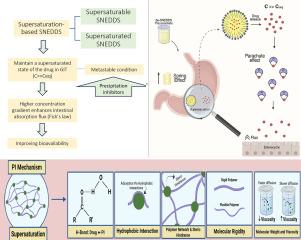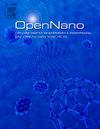过饱和型SNEDDS的最新进展:配方、机制和生物制药性能
Q2 Pharmacology, Toxicology and Pharmaceutics
引用次数: 0
摘要
这篇综述重点介绍了基于过饱和的自纳米乳化给药系统(SNEDDS),重点是配方策略、过饱和的产生、稳定机制以及它们对药物释放、渗透和生物利用度的影响。该讨论基于2020年至2025年间发表的知名数据库中的文章。基于过饱和的SNEDDS分为过饱和型和过饱和型,在过饱和的开始和沉淀抑制的方法上有所不同。广泛用于BCS II类和IV类药物,这些系统增加了热力学活性并促进了药物在胃肠道的吸收。虽然亚稳且容易析出,但沉淀抑制剂(PIs)如HPMC或PVP可以稳定过饱和状态,抑制成核和晶体生长。适当的筛选对于确定每种制剂最合适的pi至关重要。与纯药物、传统SNEDDS或上市制剂相比,过饱和和过饱和SNEDDS改善了药物释放和肠道渗透,提高了生物利用度。本文章由计算机程序翻译,如有差异,请以英文原文为准。

Recent progress in supersaturation-based SNEDDS: Formulation, mechanism, and biopharmaceutical performance
This review highlights supersaturation-based SNEDDS (self-nanoemulsifying drug delivery systems), focusing on formulation strategies, supersaturation generation, stabilization mechanisms, and their impact on drug release, permeation, and bioavailability. The discussion is based on articles from reputable databases published between 2020 and 2025. Supersaturation-based SNEDDS are classified into supersaturable and supersaturated types, differing in the onset of supersaturation and approaches to precipitation inhibition. Widely developed for BCS Class II and IV drugs, these systems increase thermodynamic activity and enhance drug absorption in the gastrointestinal tract. Although metastable and prone to precipitation, precipitation inhibitors (PIs) such as HPMC or PVP can stabilize the supersaturated state, suppressing nucleation and crystal growth. Proper screening is essential to identify the most suitable PIs for each formulation. Supersaturable and supersaturated SNEDDS have improved drug release and intestinal permeation, enhancing bioavailability compared to pure drugs, conventional SNEDDS, or marketed formulations.
求助全文
通过发布文献求助,成功后即可免费获取论文全文。
去求助
来源期刊

OpenNano
Medicine-Pharmacology (medical)
CiteScore
4.10
自引率
0.00%
发文量
63
审稿时长
50 days
期刊介绍:
OpenNano is an internationally peer-reviewed and open access journal publishing high-quality review articles and original research papers on the burgeoning area of nanopharmaceutics and nanosized delivery systems for drugs, genes, and imaging agents. The Journal publishes basic, translational and clinical research as well as methodological papers and aims to bring together chemists, biochemists, cell biologists, material scientists, pharmaceutical scientists, pharmacologists, clinicians and all others working in this exciting and challenging area.
 求助内容:
求助内容: 应助结果提醒方式:
应助结果提醒方式:


